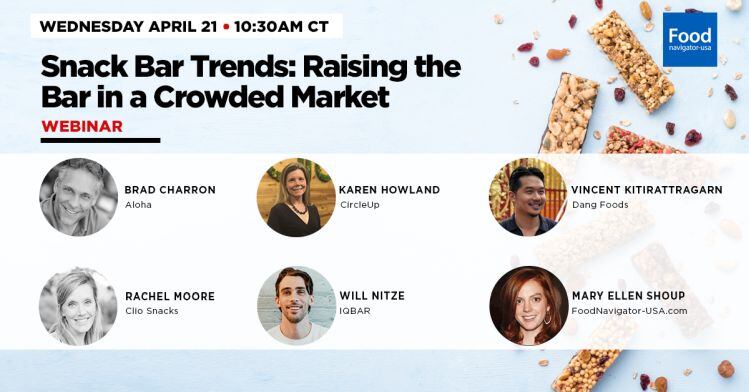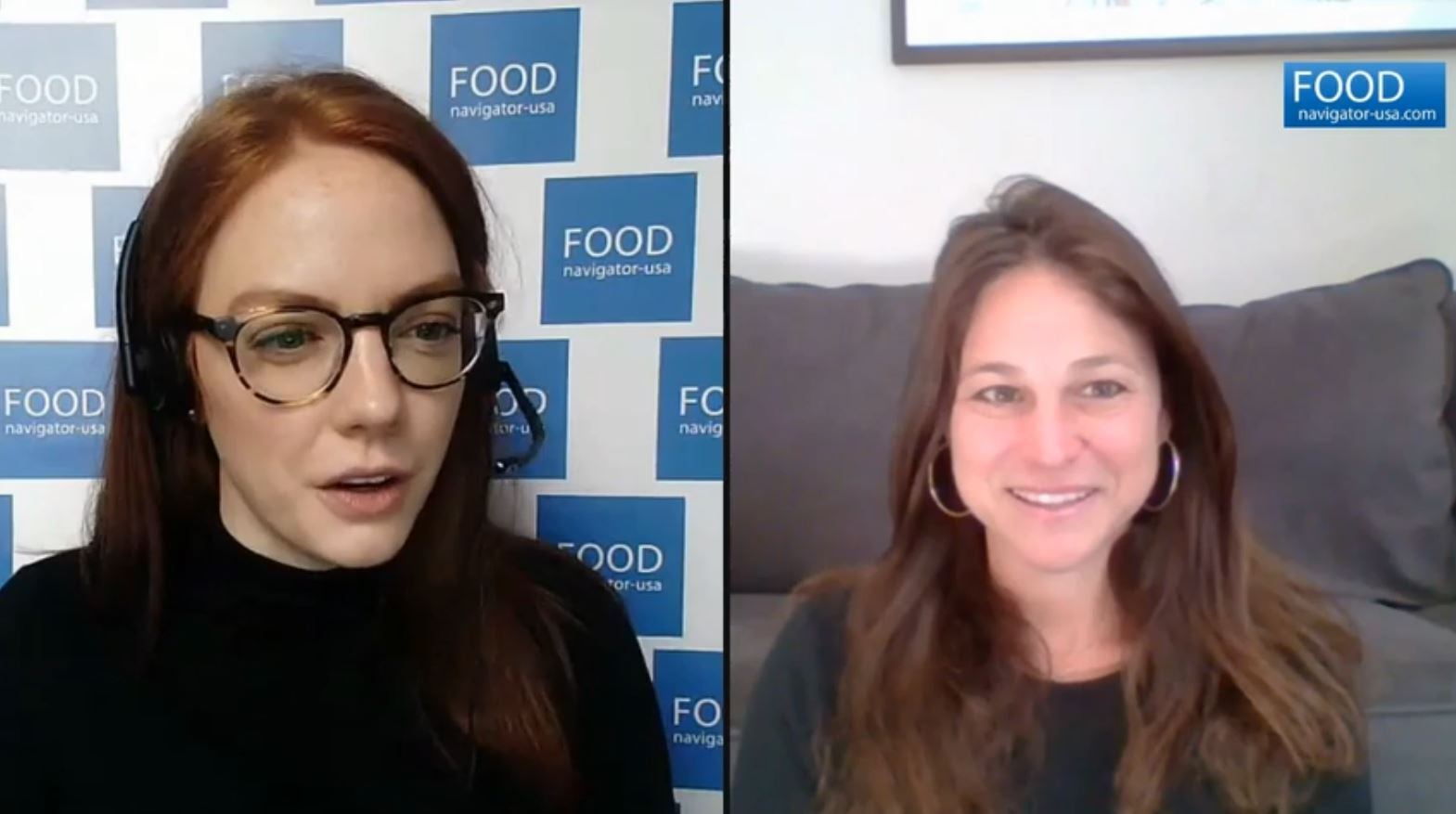Among the best-selling innovation themes that surfaced in 2020 that likely will continue in 2021 as we wait for herd immunity and economies to reopen is a demand for products that promise comfort, new experiences and wellness, Sally Lyons Wyatt told attendees during the research company’s popular state of snacking webinar earlier this month.
Looking first at how the pandemic reshaped Americans’ approach to snacking as a whole, Lyons Wyatt noted that last year’s near overnight shift to staying at home and repeated lockdowns during the pandemic helped drive dollar sales of snacking up 79% in 2020 – a trend that was driven by increased frequency and more diverse usage occasions for snacks.
She explained 25% of consumers reported snacking more frequently in 2020 – a five-point increase from 2016 that many consumers attributed to snacks filling more and different needs than in the past. For example, the percentage of consumers opting for snacks for enjoyment increased seven points from 2019, while reaching for snacks to satisfy hunger was up two points, and a desire to please others in the house was up six points. In addition, giving snacks for holidays and special occasions also increased three and two points respectively, according to IRI data.
But not all parts of snacking benefited from the pandemic, Lyons Wyatt added. Products designed for on-the-go and smaller pack sizes saw sales fall slightly with units down 1% and volume down 0.3% among total core snacks compared to a 5% and 10% increase in total store units and volume respectively.
This dip can be attributed in part consumers reaching for larger pack sizes for value and to satisfy multiple household members. According to IRI, 58% of consumers want snacks that appeal to multiple people in their households, and 17% bought larger packs with the intention of sharing to save money, representing a 10% increase in core snack multipack sales.
Similarly, dollar sales of new launches in core snack categories fell a significant 79% last year compared to the average of the prior three years – likely a factor of manufacturers and retailers focusing on producing and stocking best sellers and pulling back on fringe and new items while the supply chain adjusted to shifting shopping demands. Some manufacturers also paused or delayed launches because celebrating a new product didn’t seem appropriate during the pandemic and they didn’t think consumers would be in the right mindset to purchase and enjoy the products.
As more people become vaccinated and economies reopen, though, Lyons Wyatt says she expects sales of on-the-go items and smaller pack sizes to pick back up. She said she also expects new product launches to resume and drive a “blockbuster year” for innovation.
Comforting flavors offer distraction and promise of returning normalcy
A key component to which innovations will win in 2021 will come down to taste, which has always been a top priority for consumers, but which increased six points to 93% in last year compared to 2018, Lyons Wyatt said. This increase ate into consumer preference for flavor, which dropped 2 points but remained high with 89% of consumers saying they have a preferred flavor.
What this means for snack makers is premium quality and flavor are increasingly important – and were called out as priorities for 70% of consumers, according to IRI.
Looking at launches in the last 14 months, Lyons Wyatt found fruit and fruit flavored snacks “were off the charts,” and ranged from standalone options, like mango, to pairings with other spices or floral flavors, like mango and cinnamon or strawberry hibiscus.
Other popular flavor trends in 2020 that could portend what is to come in 2021 include chocolate combinations, such as Mexican hot chocolate or chocolate raspberry, and dessert themed flavors, like birthday cake or churro. Maple, nut butter, hot & spicy as were popular flavor choices for new products.
Beyond flavor, concentrations of new products in certain categories could also shine a light on where there is white space and consumer interest, Lyons Wyatt said.
For example, innovation abounded in children’s food, including yogurt & topping combinations, frozen desserts with hidden veggies and easy-to-eat single serve peanut butter packs. Other hot areas for innovation include plant-based anything and everything, permissibility with bites, minis and thins – a trend that seems to straddle the desire for larger packs sizes and portion control – and brand extensions and crossovers, such as ice cream with popular branded cereal flavors, yogurts with branded candy flavors and cereal packaged as bars or scaled up in size and packed to rival single-serve chips.
Snacks with benefits
While many Americans looked for comfort and indulgence from snacks, 56% said they wanted snacks with additional health benefits beyond nutrition – likely driven by their increased overall interest in in health, wellness and immunity, according to IRI.
As the year progressed, consumer interest in certain benefits became more refined – driving strong sales increases. For example, IRI found, sales of products promising to help reduce cholesterol increased 38% and offering more potassium increased 5%. Consumers also wanted more vitamins. Products with vitamin A increased 19%, C 19%, D 8% and E – off a notably small base – 1,030%.
Consumers also turned to snacks to help them meet specific dietary needs with 28% saying they wanted snacks that support a diet they follow, such as keto, Atkins, Paleo or others, and 40% saying they used snacks to manage daily calorie intake. In addition, 18% of consumers said they wanted vegan snacks – up 9% in dollar sales – and a 19% wanted vegetarian snacks – up 8% -- both representing a growth pocket going forward.
Delivering an experience beyond nutrition boosts sales
Finally, manufacturers offering consumers experiences through snacks likely will find ongoing success in 2021 as many consumers continue to remain predominately at home as the vaccination process moves forward slowly.
According to IRI, 67% of consumers want snacks that are fun to eat, 52% want snacks to add excitement to their daily diet, 51% want an “authentic” or unique snack experience and 67% want snacks for enjoyment – not to satisfy hunger.
Last year, brands added “experience” to their snacks through social media, like Snapchat, and the rise of QR codes – while not used widely in snacks yet – could hold promise for engagement beyond eating, Lyons Wyatt noted.
Overall, she said she expects snacking to continue to grow with multiple points of interest as mobility returns but some newfound interests remain.
Editor's note: Interested in learning more about how the snack bar segment has been impacted by the pandemic and what 2021 might hold for category? Tune into FoodNavigator-USA's upcoming free webinar -- Snack Bar Trends: Raising the bar in a crowded market.



